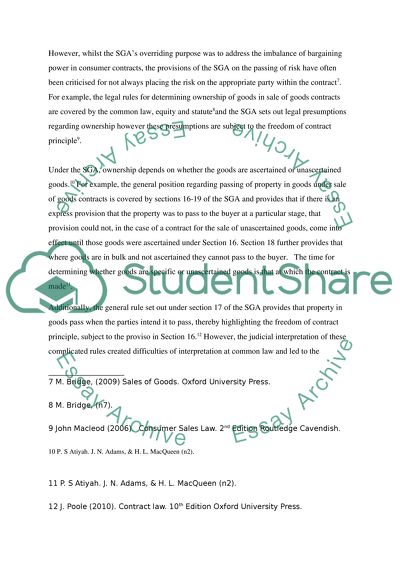Cite this document
(“Discuss: Section 20A & 20B of the Sale of Goods (Amendment) Act 1995's Essay”, n.d.)
Discuss: Section 20A & 20B of the Sale of Goods (Amendment) Act 1995's Essay. Retrieved from https://studentshare.org/miscellaneous/1573494-discuss-section-20a-20b-of-the-sale-of-goods-amendment-act-1995s-impact-on-section-16-of-the-sale-of-goods-act-1979-regarding-passing-of-property-in-goods
Discuss: Section 20A & 20B of the Sale of Goods (Amendment) Act 1995's Essay. Retrieved from https://studentshare.org/miscellaneous/1573494-discuss-section-20a-20b-of-the-sale-of-goods-amendment-act-1995s-impact-on-section-16-of-the-sale-of-goods-act-1979-regarding-passing-of-property-in-goods
(Discuss: Section 20A & 20B of the Sale of Goods (Amendment) Act 1995'S Essay)
Discuss: Section 20A & 20B of the Sale of Goods (Amendment) Act 1995'S Essay. https://studentshare.org/miscellaneous/1573494-discuss-section-20a-20b-of-the-sale-of-goods-amendment-act-1995s-impact-on-section-16-of-the-sale-of-goods-act-1979-regarding-passing-of-property-in-goods.
Discuss: Section 20A & 20B of the Sale of Goods (Amendment) Act 1995'S Essay. https://studentshare.org/miscellaneous/1573494-discuss-section-20a-20b-of-the-sale-of-goods-amendment-act-1995s-impact-on-section-16-of-the-sale-of-goods-act-1979-regarding-passing-of-property-in-goods.
“Discuss: Section 20A & 20B of the Sale of Goods (Amendment) Act 1995'S Essay”, n.d. https://studentshare.org/miscellaneous/1573494-discuss-section-20a-20b-of-the-sale-of-goods-amendment-act-1995s-impact-on-section-16-of-the-sale-of-goods-act-1979-regarding-passing-of-property-in-goods.


